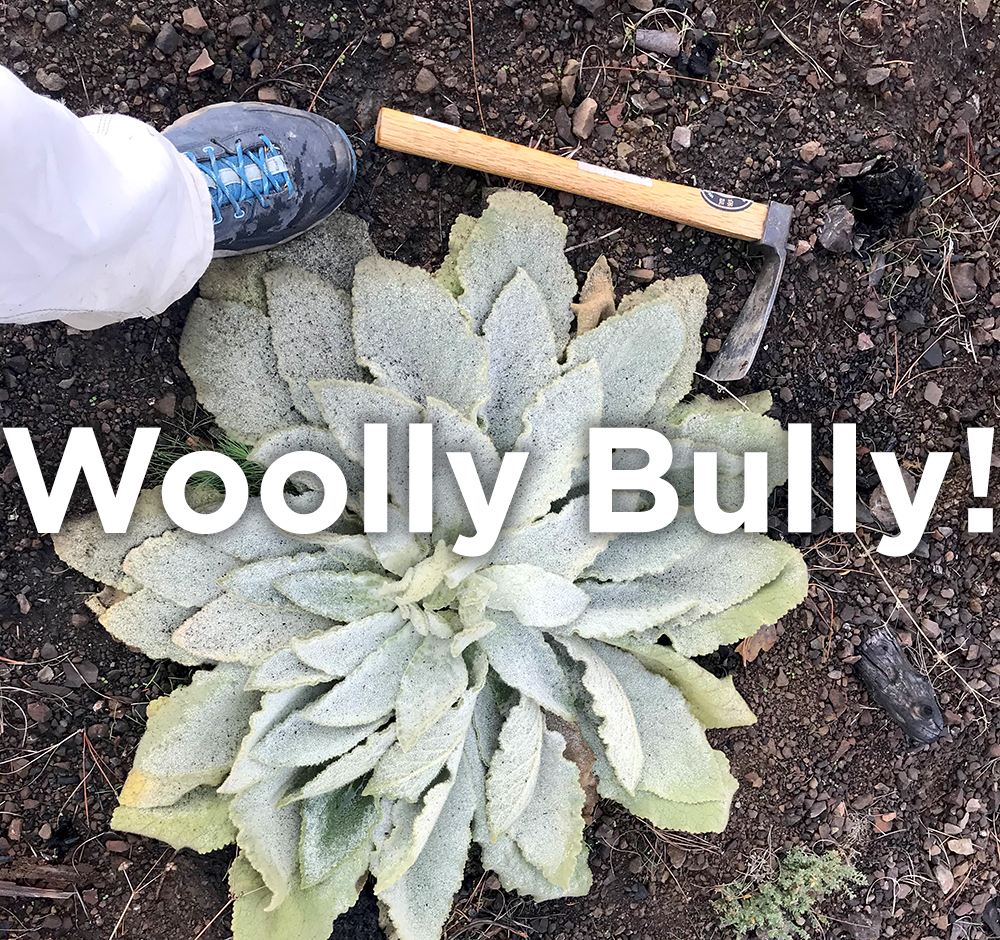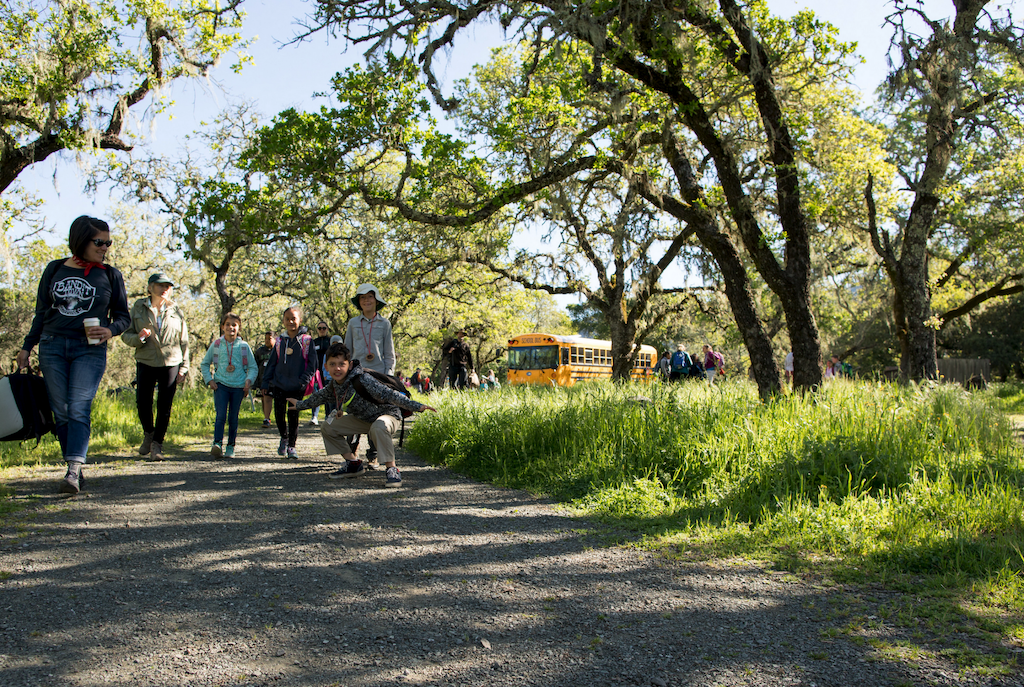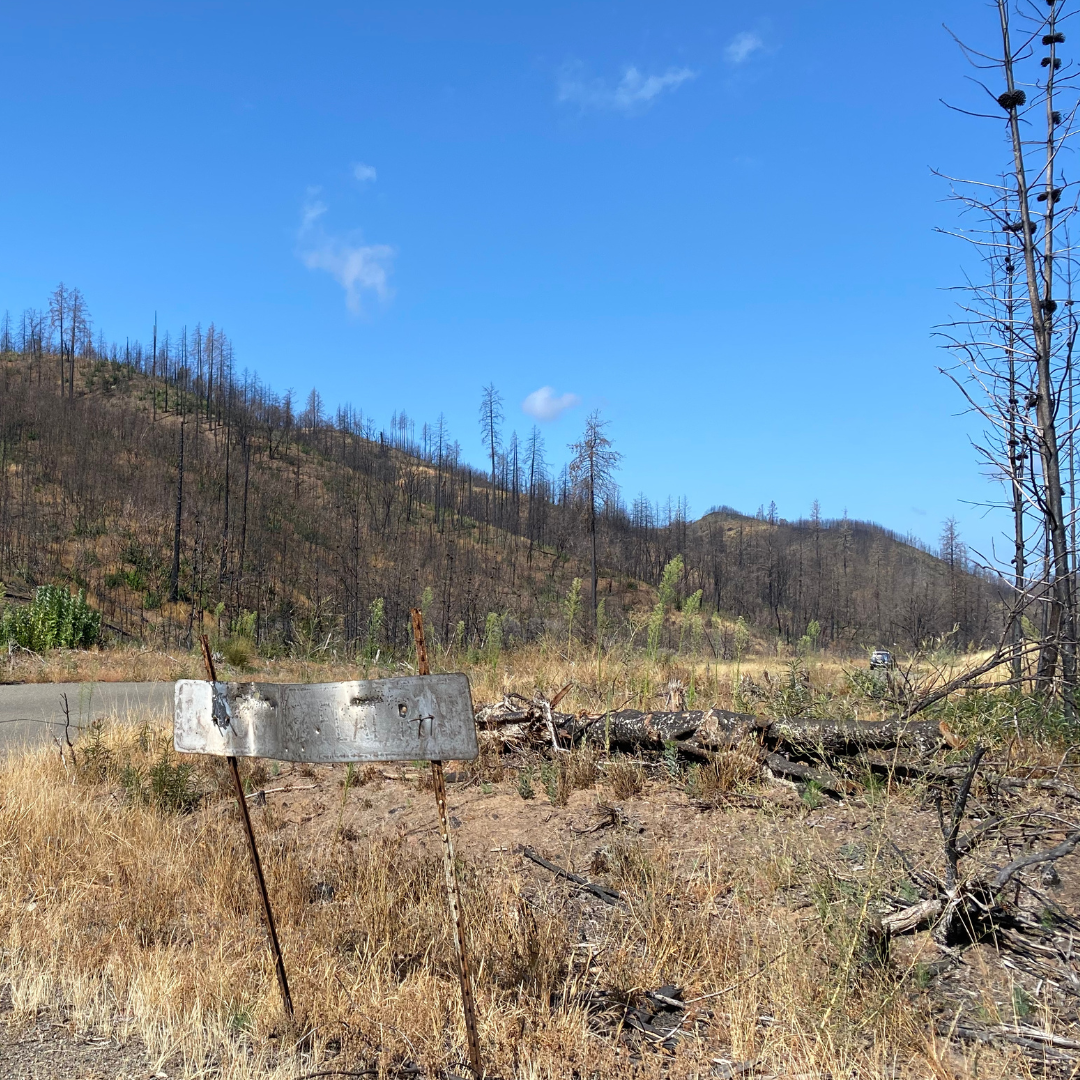Explosion of woolly mullein
On the Modini Preserve in the northern Mayacamas Mountains, new post-fire populations of the non-native, woolly mullein (Verbascum thapsus) have exploded in several areas of burned knobcone pine (Pinus attenuata) understory—areas that were dominated by native species last spring.
Native to Eurasia, woolly mullein was intentionally introduced to the U.S. many times due to the plant’s medicinal qualities. It relies on periodic disturbance for seedling establishment, which is greatly enhanced when there is bare ground—taking full advantage of conditions in play on the Preserve after the 2019 Kincade fire.
In our region, you may notice woolly mullein’s typical biennial growth—in the first year, the seedlings will mature into large, dusty-green rosettes up to two feet in diameter; in the second year, tall fragrant flower stalks bolt upward by midsummer, producing 100,000 seeds that can remain viable in the soil over 100 years!


A big bully
We began to notice that by late fall, new seedlings of delicate annual native wildflowers, like little spring beauty (Claytonia exigua), were getting crowded-out by the bully mullein. Resource ecologist Julianne Bradbury and land steward Kyle Doron sprung into action, removing the large rosettes from high-priority areas before most had a chance to bolt.

Close up of mullein treatment area targeted by preserve staff between December 2020 and early January 2021.

Photos: Preserve Manager Michelle Cooper; Maps: Resource Ecologist Julianne Bradbury




